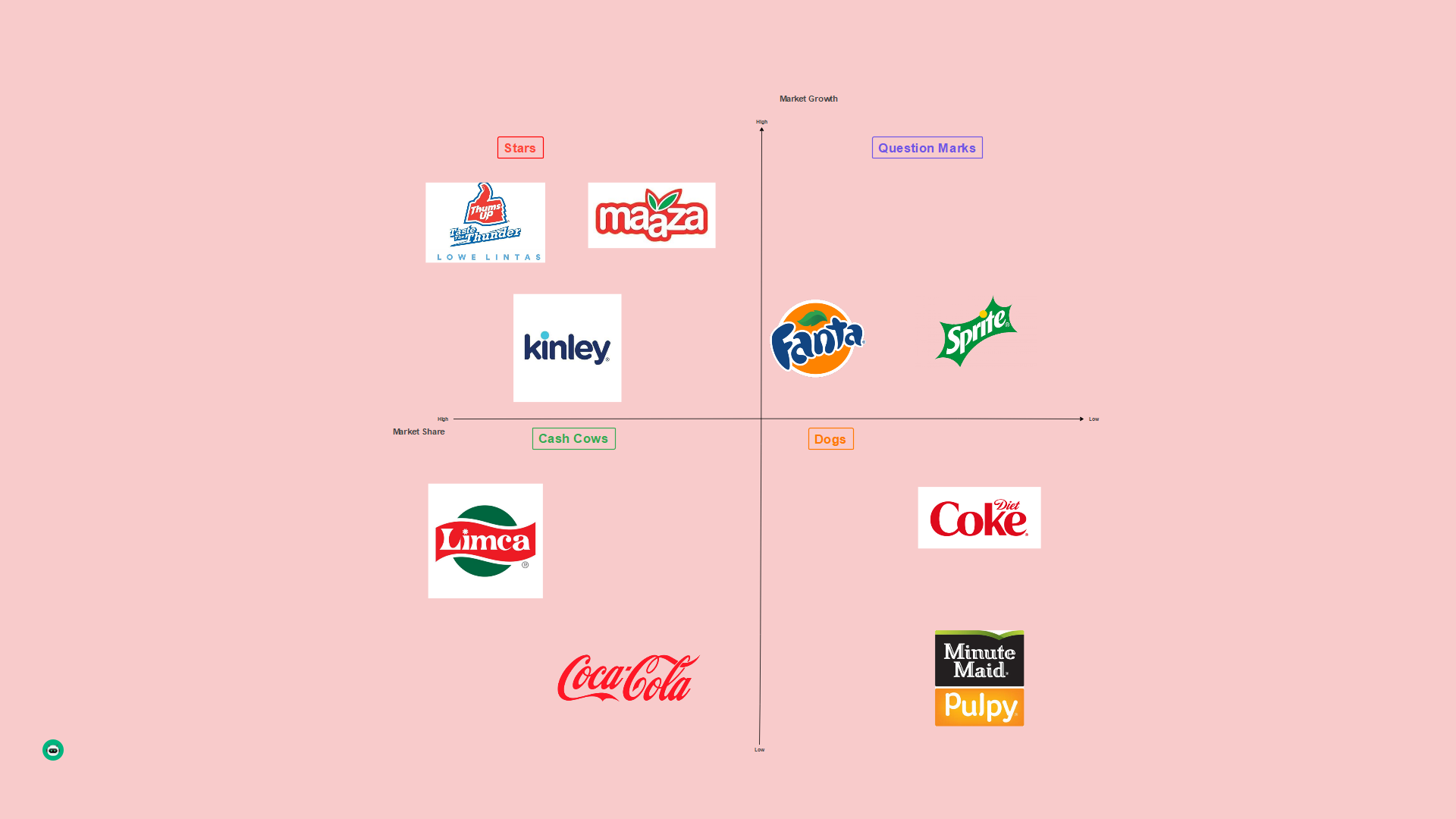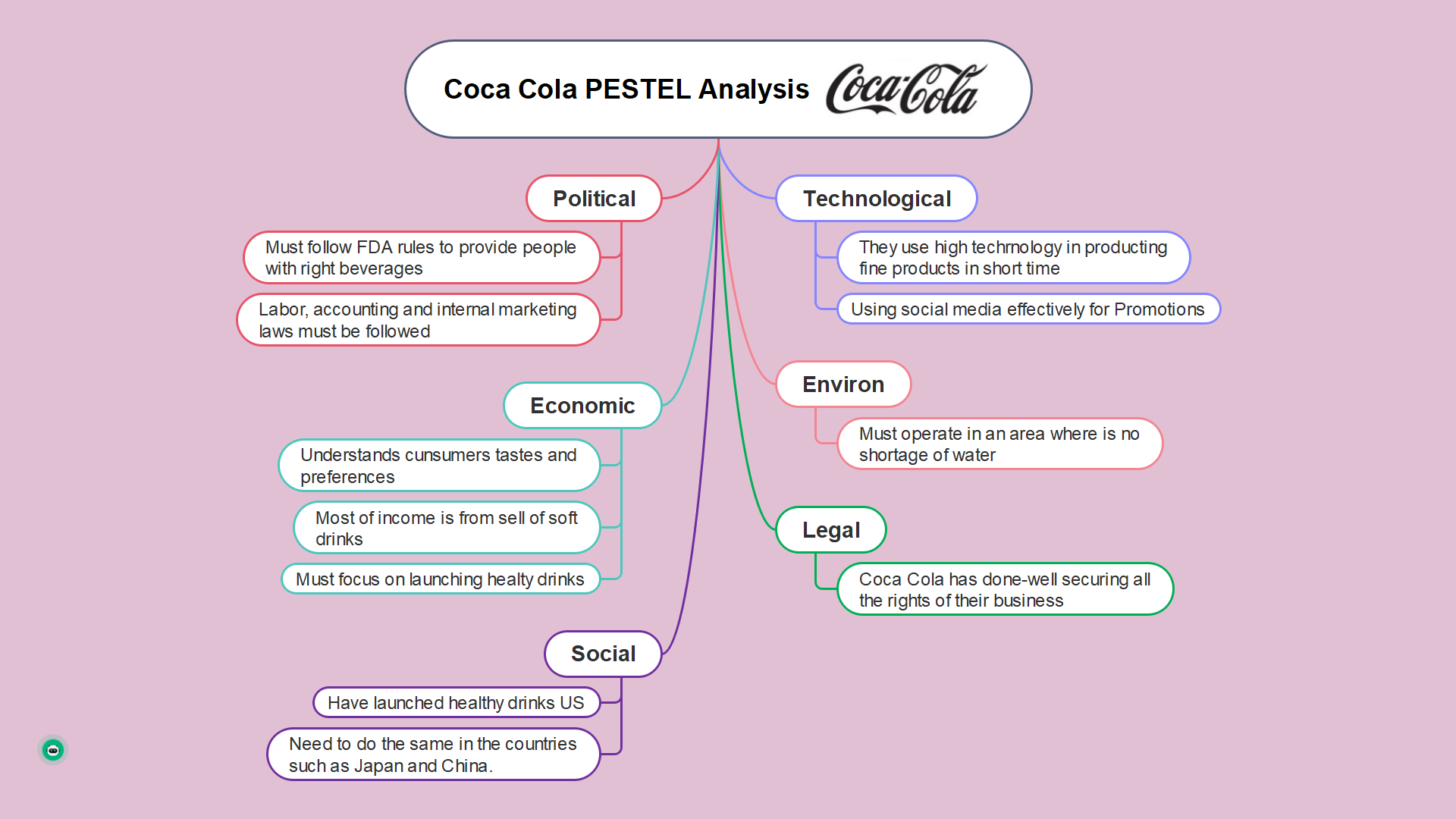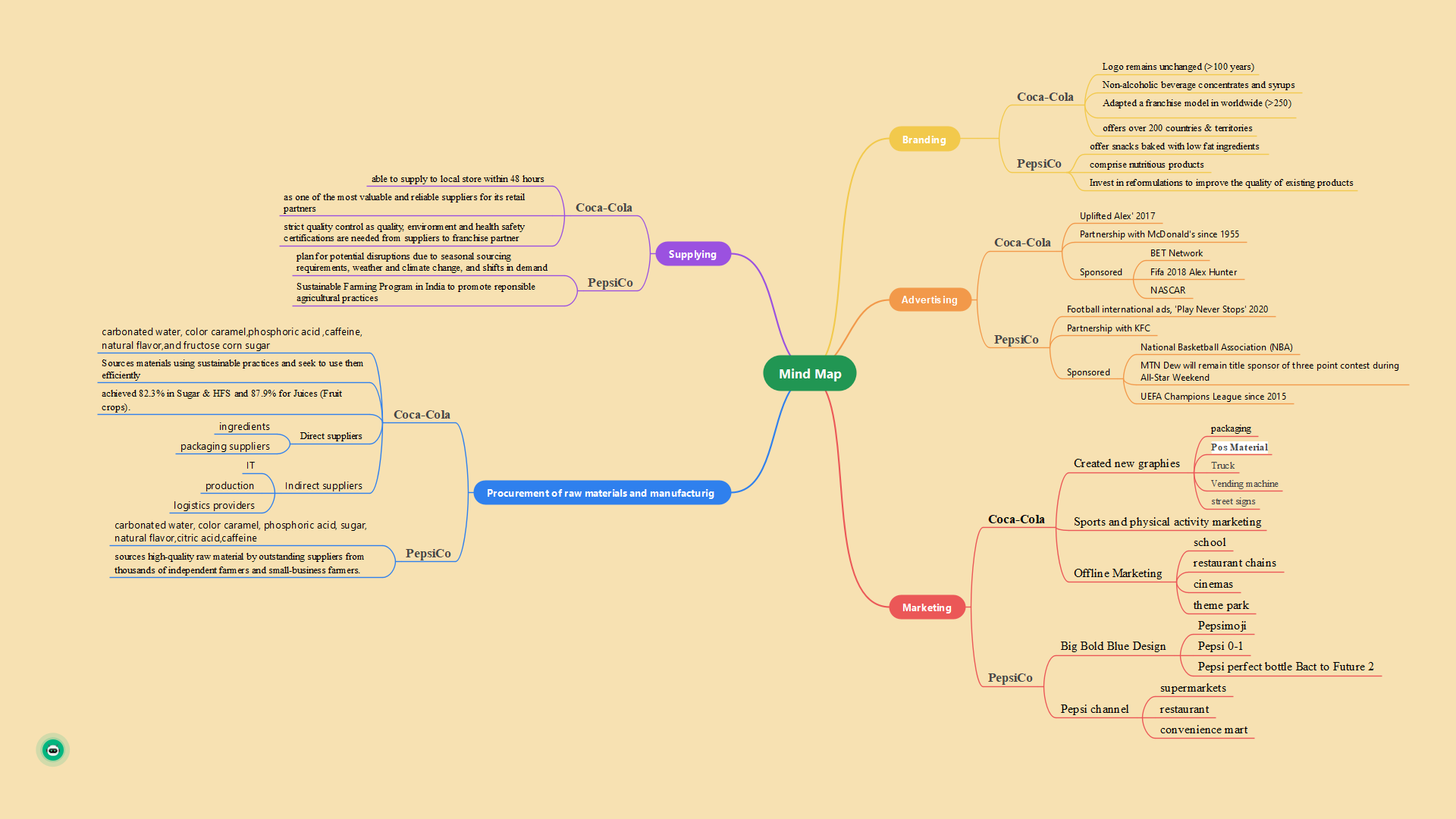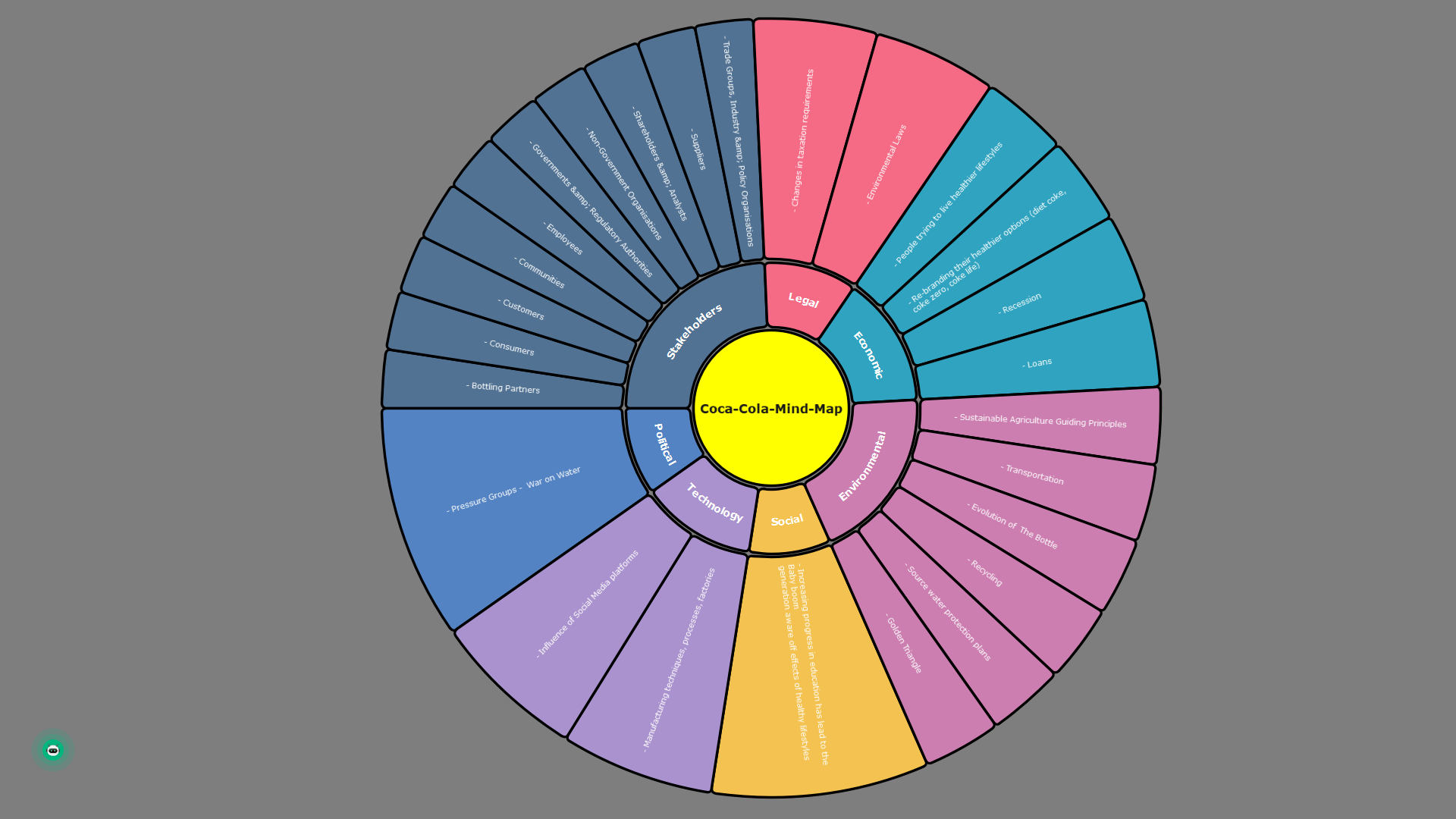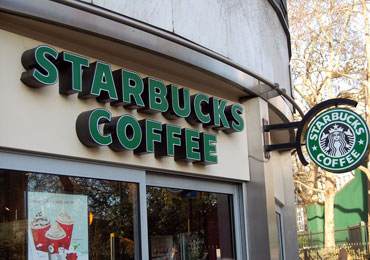Coca-Cola Segmentation, Targeting, and Positioning
Discover More Helpful Information!
Welcome to EdrawMind!![]() Unleash your creativity and enhance productivity with our intuitive mind mapping software.
Unleash your creativity and enhance productivity with our intuitive mind mapping software.
Coca-cola is generally tagged as the 'soft drink' of the world (Bell 2004). The company started selling its drink in 1886 when Dr. John S Pemberton charged his customers five cents per bottle. Since then, the brand has become the leading soft manufacturer globally with over 700,000 employees with more than 500 brands.
The company has been very successful in its campaign that it has solidified its status to be one of the icons in American culture. As it continues to expand globally, Coca-Cola partnered with several bottlers worldwide to go over all the processes of every product.
Behind the company's success is a marketing approach that typically guides Coca-Cola to market its products. Most companies generally classify their marketing strategies into different categories. As with Coca-Cola, market segmentation, targeting, and positioning are three essential factors that helped the company effectively cater to its target customers.
The subsequent chapters of this article will analyze these three variables in Coca-Cola's marketing strategy. This can also serve as a guide for startups to formulate their marketing approach.
Market Segmentation of Coca-Cola
Market segmentation refers to classifying potential markets in segments or groups with common needs and responding similarly to a specific marketing action. This approach allows firms to target various categories of customers that perceive the absolute value of particular products and services variable from one another.
Coca-Cola's market segmentation focuses on four various elements, namely geographic, demographic, psychographic, and behavioral. Coca-Cola might have originated from the United States, but it has expanded its brand to various countries across the globe over the years. The company's geographic segmentation aims to drive the market into different geographical units, including cities, regions, and neighborhoods. While Coca-Cola might be focusing on urban and suburban areas, it also ensures a countrywide product distribution network. This is in the realization that as the company expands, there is a demand from those in rural areas.
Meanwhile, the demographic segmentation of Coca-Cola is divided into sub-segments based on various variables like age, occupation, family life cycle, race, religion, generation, social class, and nationality. These variables are the most popular basis of Coca-Cola to distinguish customers groups. The psychographic element of the Coca-Cola market segmentation is categorized into different groups based on lifestyle, personality, or values.
The behavioral variable is the final element in Coca-Cola's marketing segmentation. It generally focuses on the customers' knowledge of, use of, response, and attitude towards its products. Most marketers treat the behavioral variables as excellent starting points for formulating market segments.
Targeting of Coca-Cola
Coca-Cola's targeting strategy is broader, not only because of its global presence in the market but also with the several products that they provide. There is also the need to satisfy various customers, ranging from average to health-conscious ones. The primary target of Coca-Cola is younger customers within the age bracket of 10-25 and a secondary market composed of people aged 25-40.
The company targets the market that desires an intense flavor with their regular cola drinks in terms of taste. Meanwhile, diet cola drinks and their variants target those customers that are health conscious. Coca-Cola campany has also expanded its product to non-cola beverages to target those not fond of drinking its regular cola drinks. A Coca-Cola product such as Sprite is specifically designed to target teens and college students, while others target the young working group.
Positioning of Coca-Cola
Positioning tackles how products will stand with the competition, which offers the same products and services in the market and customers' minds. An excellent positioning transforms a product into a unique one, making customers consider using it. In a marketplace with various cluttered products showcasing similar benefits, an effective positioning strategy makes the product stand out among others and creates curiosity from customers.
With Coca-Cola, it positions its products as thirst-quenching and refreshing. The products they offer are said to bring joy to its target market. The drinks and other products from Coca-Cola are also associated with having a great time with family and friends while enjoying daily life. Additionally, the company also markets its products consistently and of premium quality.
For those looking for high-quality drinks, one of the names that will surely come into their minds will be Coca-Cola. The company has an extensive selection of refreshments; each offers a positive experience for consumers. In contrast to other beverage brands, Coca-Cola brands itself as a product that provides happiness and positive in customers' lives. Ultimately, the company's primary focus is to cater to the needs and preferences of its global customers.
Table of Coca-Cola Segmentation, Targeting, and Positioning
The Coca-Cola market segmentation, targeting, and positioning variables are comprehensively described above. You can refer to this table below for a simplified list of how the company categorized these variables and principles.
|
Market Segmentation |
Targeting |
Positioning |
|
Geographic |
|
-Thirst-quenching and refreshing products -Promotes happiness and positivity for every drink |
|
Region |
Domestic International |
|
|
Density |
Urban Rural |
|
|
Demographic |
|
|
|
Age |
10-40 |
|
|
Gender |
Males and females |
|
|
Life-cycle stage |
Bachelor, singles not living at home, newly married couples, Full Nest I and II |
|
|
Income |
Average, above average, high-income earners |
|
|
Occupation |
Professionals, students, employees |
|
|
Behavioral |
|
|
|
Degree of loyalty |
Hard-core and soft-core loyals |
|
|
Benefits sought |
Refreshment, satisfaction of habit, enjoying the good taste, spending time with people |
|
|
User status |
Regular users |
|
|
Personality |
Easygoing, ambitious, determined |
|
|
Psychographic |
|
|
|
Social class |
Working, middle, and upper classes |
|
|
Lifestyle |
Explorer, aspirer, succeeder |
Bonus: Four More Types of Analysis of Coca-Cola
Unleash your marketing prowess with these insightful templates. Delve into the realm of Coca-Cola's segmentation, targeting, and positioning diagrams. Explore the templates to understand Coca-Cola's marketing strategies better and enhance your brand's competitive edge.
Coca-Cola Marketing Mix
The Coca-Cola diagram analysis below dissects key aspects of Coca-Cola's marketing strategy. It covers Products (Coke, Sprite, Powerade), Places (restaurants, vendors, grocery stores), Prices (price discrimination), and Promotions (TV ads, social media, print media, billboards, digital marketing).
The diagram is valuable for marketers, students, and analysts seeking to understand Coca-Cola's successful strategies. It provides a visual framework to examine their product range and distribution channels. The diagram also tackles pricing tactics and promotional methods. It's useful for devising marketing plans or evaluating strategies in the beverage industry.
Coca-Cola BCG Matrix
The circular diagram features the main categories on the outer ring. The topic involves stakeholders, legal, economic, environmental, social, technology, and political. Each category branches into specific subtopics, with varying numbers of subtopics. Some contain one, while others have up to ten.
The Coca-Cola BCG Matrix visually represents the company's product portfolio into four segments. The segments are Stars (including Maaza, Kinley, and Thums Up), Question Marks (Fanta and Sprite), Cash Cows (Limca and Coca-Cola), and Dogs (Diet Coke and Minute Maid).
Use the matrix when analyzing a company's product portfolio. In the diagram below, Coca-Cola determines where each product stands in terms of market growth and market share. It helps them allocate resources, such as investing in "Stars" for further growth or optimizing mature "Cash Cows." It's an essential tool for strategic product management and marketing planning.
Coca-Cola PESTEL Analysis
The PESTEL diagram tackles the external factors affecting the company's operations across six key dimensions. It starts with Political (compliance with FDA and labor laws), Economic (adapting to changing consumer preferences and health trends), Social (enhancing market efforts in specific regions like Japan and China), Technological (leveraging social media for marketing), Environmental (managing operations in water-rich areas), and Legal (ensuring comprehensive legal rights).
The diagram below is valuable when conducting strategic assessments or risk analysis. It comprehensively explains the diverse influences on Coca-Cola's business environment.
Coca-Cola VS PepsiCo
The mind map below is a concise template that explores key aspects of both companies' operations. It branches into branding, advertising, marketing, supply chain, procurement of raw materials, and manufacturing. Within each branch, it analyzes Coca-Cola and PepsiCo, enabling easy and direct comparison.
This mind map is useful for competitive analysis, market research, or strategic planning. You can grasp the similarities and differences between the two major players in the beverage industry. The one-page format enhances its accessibility. It is great for assessing the strategies, strengths, and weaknesses of Coca-Cola and PepsiCo.
Coca-Cola Introduction
The circular diagram features the main categories on the outer ring. The topic involves stakeholders, legal, economic, environmental, social, technology, and political. Each category branches into specific subtopics, with varying numbers of subtopics. Some contain one, while others have up to ten.
The diagram effectively conducts corporate analysis, sustainability reports, or stakeholder management. It aids in categorizing various factors influencing Coca-Cola's operations. The use of color coding simplifies complex information. It's easier for stakeholders, analysts, and decision-makers to assess the company's performance. They can easily align strategies or ensure compliance with environmental and legal standards.
Key Takeaways
Suppose you are to open your beverage store, Coca-Cola's marketing approach can be helpful. The company might be a giant one, but several principles are also applicable for startups, looking at its marketing treatment. It is just a matter of localizing each variable to fit into your brand's marketing approach. The diagram and discussion above can also be helpful if you are studying marketing and plan to create your first marketing strategy using marketing segmentation, targeting, and positioning principles.
It can also be beneficial to organize all the components through mind mapping software, similar to what was illustrated above. EdrawMind is a user-friendly mind mapping tool that offers a straightforward process for creating mind maps online. If you want it to look playful, you can even put images, shapes, and other elements to your diagram. The interface is easy to navigate, giving first-time users ease. If you find it a handful to make your mind map structure, you can use pre-built templates of the Market Segmentation and STP Analysis. The templates will provide you with a framework, and all you have to do is input the information on the diagram. The software is also very flexible as users can either work on their mind maps through a browser or from their desktops.
References
- 12 Examples of Positioning Statements & How to Craft Your Own
- An Example of the Segmentation, Targeting and Positioning Process
- COCA COLA's SEGMENTATION, TARGETING & POSITIONING STRATEGY
- Definition of Positioning
- Identifying Market Segments and Targets for Marketing Strategy Plan of Coca-Cola Company in Malaysia
- PepsiCo Segmentation, Targeting and Positioning
- SEGMENTS
- Segmentation of coca cola
- Segmentation, targeting and positioning with example Coca-Cola Company
- The Coca-Cola Company Marketing Strategy



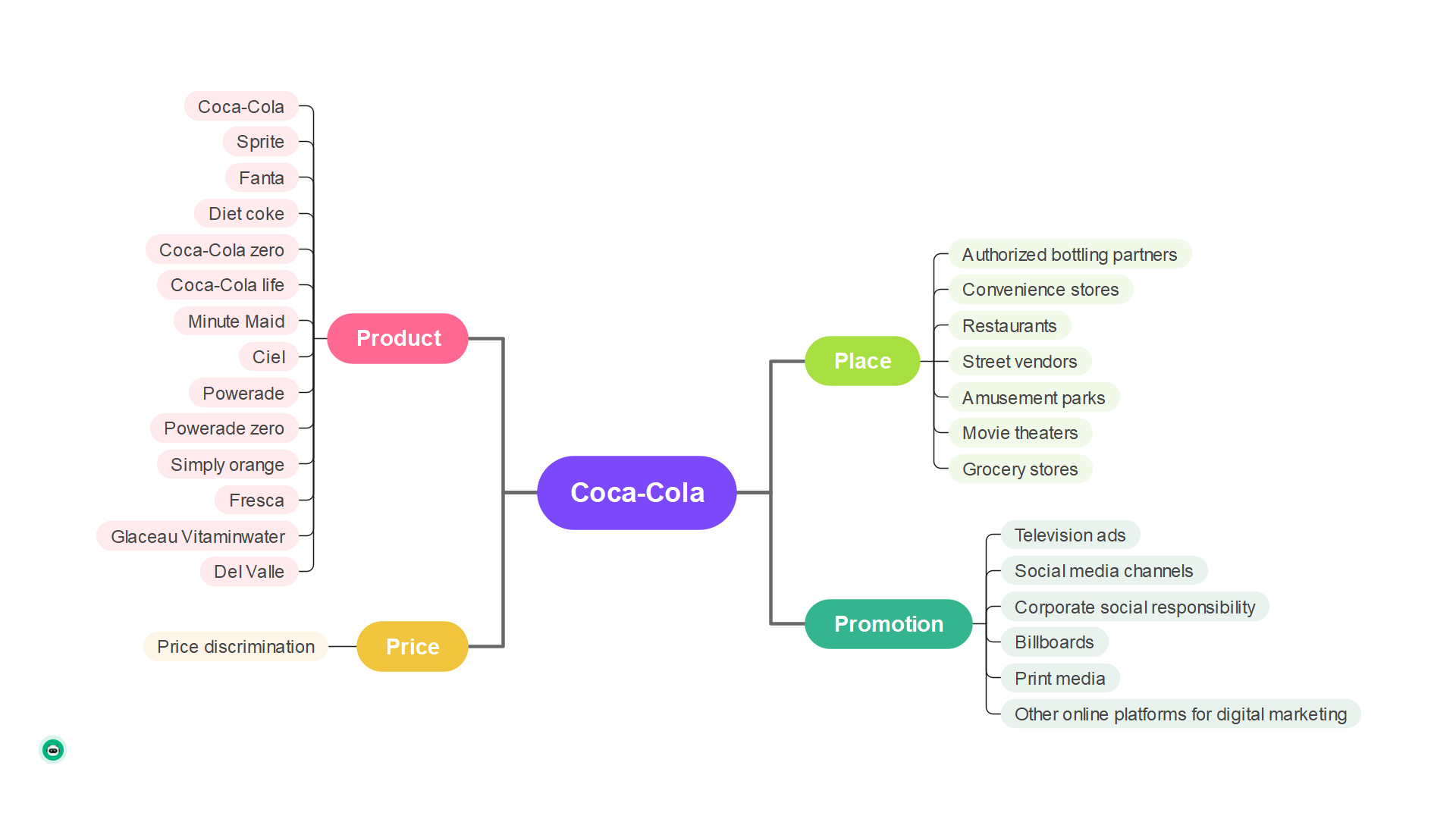
 below.
below.